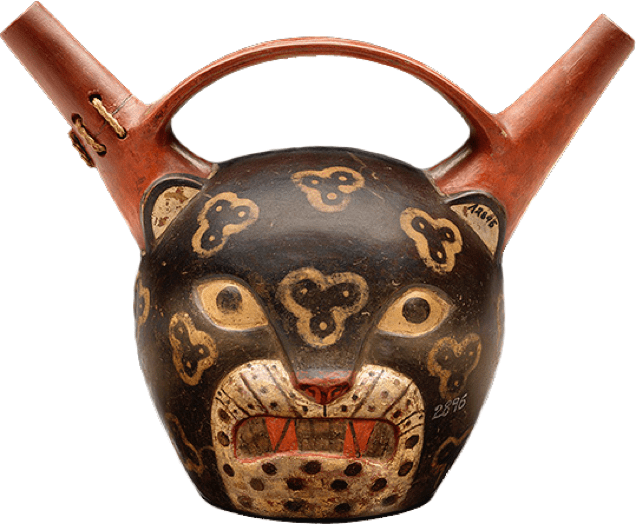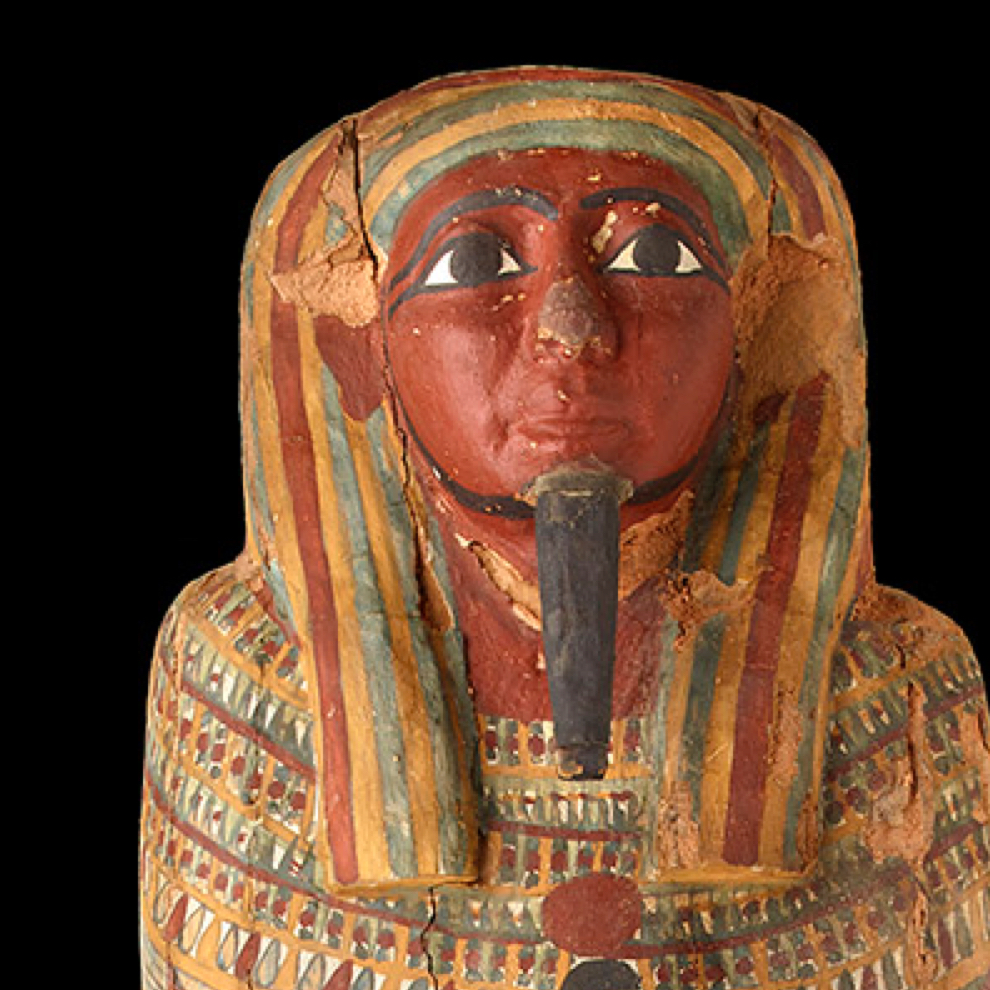Modules

Fine ceramics, such as this double-spouted jar with the face of a jaguar, were often buried with the dead mummies in Ancient Egypt.
Read more »©2015 The Field Museum, photographer John Weinstein

Fine ceramics, such as this double-spouted jar with the face of a jaguar, were often buried with the dead mummies in Ancient Egypt.
Read more »©2015 The Field Museum, photographer John Weinstein
Mummies is co-curated by David Hurst Thomas, curator of North American Archaeology in the Division of Anthropology and John J. Flynn, Frick Curator of Fossil Mammals in the Division of Paleontology.
Mummies was developed by The Field Museum, Chicago.
The Museum gratefully acknowledges the Richard and Karen LeFrak Exhibition and Education Fund.
Mummies is proudly supported by:



Support for Hayden Planetarium Programs is provided by the Schaffner Family and the Horace W. Goldsmith Endowment Fund.
Egyptian mummies were prepared using a detailed process that included removing many of the internal organs, desiccating the body in a drying salt, and wrapping the preserved body in linen before placing it in a wooden coffin.
 Coffin #30023 dates back to the late 25th Dynasty or early 26th Dynasty of ancient Egypt, (approximately 700–600 BC).
©2015 The Field Museum, photographer John Weinstein
Coffin #30023 dates back to the late 25th Dynasty or early 26th Dynasty of ancient Egypt, (approximately 700–600 BC).
©2015 The Field Museum, photographer John Weinstein
Egyptian mummies were prepared using a detailed process that included removing many of the internal organs, desiccating the body in a drying salt, and wrapping the preserved body in linen before placing it in a wooden coffin.
 Coffin #30023 dates back to the late 25th Dynasty or early 26th Dynasty of ancient Egypt, (approximately 700–600 BC).
©2015 The Field Museum, photographer John Weinstein
Coffin #30023 dates back to the late 25th Dynasty or early 26th Dynasty of ancient Egypt, (approximately 700–600 BC).
©2015 The Field Museum, photographer John Weinstein
Discover when, how, and why ancient Egyptians and Peruvians were mummified and find out who they were in life. This show features an up-close look at rarely-exhibited mummies as well as interactive touch tables, rare artifacts, and cutting-edge imaging.
Exhibition Highlights
Read more about Mummies
News & Blogs
The Biodiversity and Environmental Halls offer a vivid and inspiring vision of the spectacular beauty and abundance of life on Earth.
Explore moreAt the Museum
See the full calendarAt the Museum
See the full calendarFelix M. Warburg Hall of New York State Environment
©2015 The Field Museum, photographer John Weinstein
Frontiers Lecture: Demystifying Black Holes
Part of the Hayden Planetarium Programs.
Dec 11, 2017 at 7:30pm
Science Bulletins
More at the Museum.
More at the Museum.
Museum Resources
The Biodiversity and Environmental Halls offer a vivid and inspiring vision of the spectacular beauty and abundance of life on Earth.
Collections & Databases
We are a collections-based museum with thousands of objects.
- Category A
- Selection 1
- Selection 2
- Selection 3
Scientific Publications
Type in a keyword or topic below to search our database.
The Science of Speciation—Molecular Adaptation in Vampire Bats
Some carnivores eat only meat, while others are more omnivorous. To understand how and when these differences in carnivore feeding may have evolved, Museum paleontologists captured X-ray scans of skulls from living and extinct species. They reconstructed the skulls as virtual models and designed feeding simulations, to test the relationship between skull biomechanics
Current Exhibitions.
The Biodiversity and Environmental Halls offer a vivid and inspiring vision of the spectacular beauty and abundance of life on Earth.
Current Exhibitions.
The Biodiversity and Environmental Halls offer a vivid and inspiring vision of the spectacular beauty and abundance of life on Earth.
You can see a working demo of the back to top module on this page by doing the following:
After, scrolling past 65% down the page, scrolling up will show the back to top button on the bottom right corner of the page. When scrolling up higher than 40% down the page, back to top button will hide.
Clicking on back to top button will take you to the top of the page.